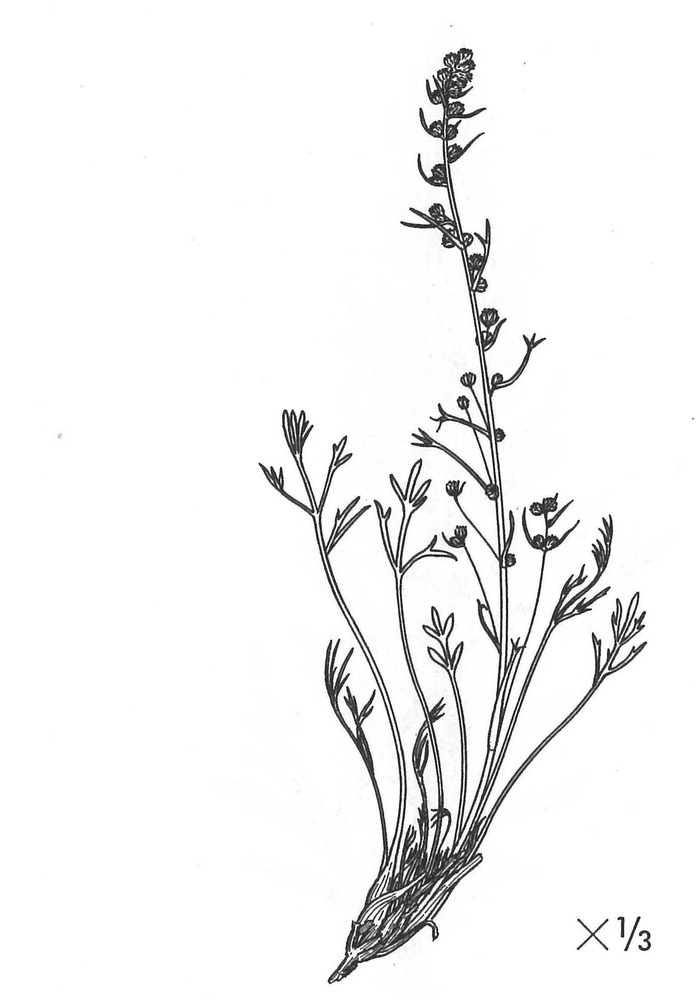| Artemisia borealis Pall. | |||
| |||
| Family | Compositae — APG family: Asteraceae | ||
| Synonyms | Artemisia borealis var. spithamaea (Pursh) Torr. & Gray., Artemisia spithamaea Pursh, Artemisia borealis var. purshii Bess., Artemisia borealis subsp. purshii (Bess.) Hult. | ||
| Description | Caespitose; stems simple or branched, more or less pubescent or nearly glabrous, often purplish, from taproot and short, woody caudex; leaves pubescent, at least when young; basal leaves 2—-3 times pinnatifid, with linear to linear-lanceolate, long, ultimate segments; stem leaves reduced; lower bracts usually with 2-3 lobes, the upper entire, linear; heads globular, 3-4 mm in diameter, the lower long-peduncled; involucral bracts ovate, pubescent or glabrous, often brownish with scarious margin; flowers glabrous or somewhat pubescent, often purplish. | ||
| Ecology | Dry slopes, sandy soil. Described from the lower Obi River. | ||
| Taxonomy notes | Extremely variable. |
This is a digital representation of Eric Hultén’s ‘Flora of Alaska and Neighboring Territories: A Manual of the Vascular Plants’, which was published by Stanford University Press in 1968. The book was digitized by C. Webb (at UAMN) as part of the Flora of Alaska project, with funding by the US NSF (Grant 1759964 to Ickert-Bond & Webb), and with permission of Stanford University Press. Data and images © 1968 Board of Trustees of the Leland Stanford Jr. Univ. Usage licence: Creative Commons BY-NC-SA 4.0. NB: You may find OCR errors; please refer to the hard-copy if in doubt.
